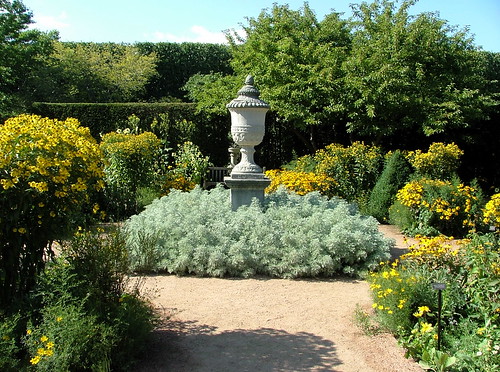Xeriscape
From the Greek word ‘xeros’ meaning ‘dry’, Xeriscape is a design style where the focus is to eliminate (as much as possible) the need for intervention, using just rainfall to sustain it. Plants are chosen for their ability to withstand dry spells, allowing them and the garden to thrive even during hosepipe bans. Using native plants (wild flowers, grasses, succulents, trees and shrubs) works well as they are already adapted to and flourishing in the natural climate. As well as time-saving, this style is also money-saving as there is no extra expense from additional water, pruning and fertilisers.
Japanese
The Japanese design style recreates miniature landscapes within a garden. Each item is placed carefully in locations likely to attract good fortune. Features are often symbolic; for example, a pond may represent an ocean or a rock may represent a mountain. Many Japanese gardens borrow scenery where the garden will be designed to ‘draw in’ features from the landscape within which it sits. Common features of Japanese gardens include bridges, lanterns, islands, ponds and often a teahouse. Water (represented by white sand in dry gardens) is always featured as it is considered the opposite to stone, creating a ying-yang balance.
French
Formality is the main feature of the French garden. The focal point is the main residence or building, with geometric gardens stretching out from it, to the horizon. Gardens are usually built on level ground and stairways are used to guide visitors around the features. French gardens typically include fountains, geometric ground designs and orangeries. Planting beds are created to complement the main building, are geometric in design and placed symmetrically in the garden. Plants and hedges are manipulated and directed into different shapes, as desired by the gardener.
Tropical
Designed to be fun, vibrant and exotic, these gardens are most suited to hot and humid climates. Although this style can be created in non-tropical climates, intervention including watering, fertilisation and mulching is necessary. Care is needed to ensure the plants survive the winter weather of a non-tropical climate – some may need to be moved to a greenhouse or wrapped up to protect against frost. These gardens are stylised by the use of large leaved plants and trees, with the height of the garden building towards the rear and sunlight falling between the leaves onto the ground.
English Garden
A typical English garden combines the formal and informal style with an emphasis towards bright and fragrant flowers. Roses are the stand out flower creating a relaxing and romantic feel to the garden. Bushes can be left to grow naturally or directed around a trellis or other garden feature. Annual and perennial plants are chosen to give the garden an ever changing appearance. Herbs, fruit and vegetable plants can also be included to provide different scents and supplement the kitchen pantry! Benches, bird baths and other furniture can be used throughout an English garden and brick or stone walls can be used, in place of hedges, to give the garden its defined boundary.
Adrian Harrison wrote this post on behalf of The Lovely Garden. Visit our website for creative ideas on how to improve your garden design in Sussex and Surrey.

